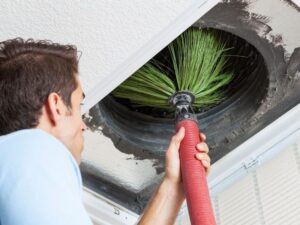Throughout the years, furnaces in Augusta, GA, have become more efficient, with newer heating systems capable of delivering up to 98% efficiency of the conditioned air into the home, according to the Department of Energy. Yet, despite the several upgrades to modern heating systems, furnaces are not built to be indestructible. Here are seven tips on how to maximize the lifespan and efficiency of your furnace.
1. Get Routine Tune-Ups
A properly timed furnace tune-up can detect issues that need minor work before you start to use the furnace more regularly again. Ideally, you’ll want to schedule a tune-up with your HVAC contractor before wintertime. A routine tune-up will typically involve inspecting the vent system and air intake grilles, cleaning the blower, recalibrating the blower motor, checking the burner and flame sensor and lubricating all moving parts.
2. Replace the Filter Regularly
Your furnace’s air filter plays a key role in the system’s overall operational efficiency – it eliminates the impurities, including dirt, allergens and dander, from the air circulating in your home. Not only does regular filter replacement protect your furnace from damage, but it also improves your home’s air quality. While there’s no magic number, we recommend changing your furnace’s air filter at least every six months.
3. Clean Your Ducts and Vents
Your furnace uses ducts running across your household behind the walls and ceiling to transport conditioned air throughout multiple rooms. Ductwork, however, collects dust and dirt over time, which can obstruct airflow and force your furnace to work harder to regulate indoor temperatures. Regular tune-ups performed by a professional HVAC contractor typically encompass ductwork inspection and maintenance.
4. Use Fans Strategically
You can achieve a warm and cozy indoor climate without having to run your furnace round the clock. Turning your ceiling fan on and having it run clockwise can help heat up the room, a trick that few homeowners know about and take advantage of. A ceiling fan spinning clockwise pulls the cool air up and, simultaneously, pushes any warm air from the ceiling back down.
5. Upgrade Your Thermostat
Old and dated thermostats are unable to effectively signal your furnace. A programmable thermostat, on the other hand, allows you to set cycle times, fan speeds and temperature targets to your exact specifications. Minimizing your furnace’s runtime through a programmable thermostat that learns your schedule and heating needs can maximize the unit’s lifespan, yield lower monthly utility costs and maintain comfortable and consistent indoor temperatures every time you’re home.
6. Check for Leaks
Gaps in your home’s ductwork, windows, doors, basement and attic can lead to hot air escaping to the outside. This means your furnace has to run longer than it needs to in order to hit your temperature targets, which negatively impacts the system’s life expectancy. Weatherstripping around windows and doors in your home or use caulk before wintertime to seal up these gaps completely without having to spend a fortune.
7. Find Natural Ways to Stay Warm
Multiple layers of clothing, a thick pair of socks and cooking more frequently are all effective and natural ways of staying warm during cold snaps in Augusta, GA. Avoiding furnace use as much as possible means slower wear-and-tear of components, including the fan blade, motor belt, gas valve, burners, heat exchanger and pilot light, as well as lower energy costs.
If you wish to learn more about how to better care for your furnace, or you’re ready to schedule a seasonal furnace tune-up, consult with Doc Savage today! Our company has been serving residential and commercial clients in Augusta, GA, and the surrounding counties since 1977. One of our friendly customer service representatives can answer any inquiries you may have.
Image provided by iStock



